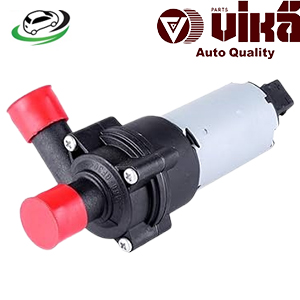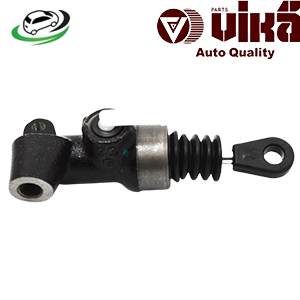-9%
Get VW Transporter Caravelle T4 New Clutch Master Cylinder 701721401
The clutch master cylinder is a critical component in a vehicle’s manual transmission system. It is responsible for converting the force exerted by the driver on the clutch pedal into hydraulic pressure, which in turn disengages the clutch. This action allows for smooth shifting between gears, ensuring optimal performance of the transmission system. Understanding the function, design, types, maintenance, and significance of the clutch master cylinder is essential for vehicle owners and enthusiasts.
2. Function of the Clutch Master Cylinder
The primary function of the clutch master cylinder is to facilitate the operation of the clutch mechanism through hydraulic force. Here’s how it works:
- Force Multiplication: When the driver presses the clutch pedal, the clutch master cylinder generates hydraulic pressure. This pressure is transferred through a series of hydraulic lines to the clutch slave cylinder, which disengages the clutch.
- Clutch Engagement and Disengagement: The clutch master cylinder plays a vital role in engaging and disengaging the clutch. When the pedal is released, the pressure in the system decreases, allowing the clutch to re-engage and transmit power from the engine to the transmission.
- Smooth Gear Shifting: A properly functioning clutch master cylinder ensures smooth gear changes by providing consistent hydraulic pressure. This smooth operation prevents grinding gears and facilitates efficient power transfer.
- Safety Feature: The clutch master cylinder is designed to allow the driver to disengage the clutch quickly, ensuring that the vehicle can come to a stop without stalling, especially in emergencies.
3. Types of Clutch Master Cylinders
Clutch master cylinders come in different designs and types, tailored to specific vehicle requirements:
- Conventional Clutch Master Cylinder: This is the most common type, typically featuring a simple hydraulic design. It consists of a reservoir for hydraulic fluid, a piston, and a cylinder. When the pedal is pressed, the piston moves, creating pressure in the hydraulic system.
- Dual Clutch Master Cylinder: Some modern vehicles feature dual clutch systems, requiring two separate master cylinders—one for each clutch. This design improves performance and allows for faster gear changes.
- Electronic Clutch Master Cylinder: In advanced vehicles, electronic systems control the clutch engagement and disengagement. These systems may use sensors and actuators to provide precise control over the clutch, improving performance and fuel efficiency.
- Remote Clutch Master Cylinder: In certain applications, the clutch master cylinder may be located away from the clutch pedal. This design is often used in custom or modified vehicles, allowing for flexible installation options.
4. Design and Construction of Clutch Master Cylinders
The design and construction of the clutch master cylinder are essential for its performance and reliability. Key components include:
- Cylinder Body: The cylinder body houses the piston and provides a secure environment for hydraulic fluid. It is typically made from aluminum or cast iron, designed to withstand high pressures.
- Piston: The piston is a critical component that moves within the cylinder. When the clutch pedal is pressed, the piston compresses hydraulic fluid, generating pressure. The design of the piston affects the responsiveness of the clutch.
- Reservoir: The reservoir holds the hydraulic fluid used in the system. It is usually transparent, allowing for easy monitoring of fluid levels. Proper fluid levels are crucial for the proper functioning of the clutch master cylinder.
- Seals and O-rings: Seals and O-rings are essential for preventing hydraulic fluid leaks. They maintain pressure within the system and ensure the longevity of the master cylinder.
- Mounting Bracket: The mounting bracket secures the clutch master cylinder to the vehicle’s chassis or firewall. Proper alignment is necessary for effective operation.
5. Importance of the Clutch Master Cylinder
The clutch master cylinder is vital for several reasons:
- Efficient Clutch Operation: A properly functioning clutch master cylinder ensures that the clutch engages and disengages smoothly. This efficiency is essential for a seamless driving experience and effective gear changes.
- Vehicle Performance: The performance of the entire manual transmission system relies on the clutch master cylinder. Any malfunction can lead to poor shifting performance, reduced power transfer, and increased wear on transmission components.
- Driver Comfort and Safety: The clutch master cylinder enhances driver comfort by allowing for smooth operation of the clutch. In emergencies, the ability to disengage the clutch quickly prevents stalling and contributes to overall vehicle safety.
- Preventing Damage: A failing clutch master cylinder can lead to increased wear on the clutch, transmission, and related components. Timely maintenance and replacement can prevent costly repairs and extend the lifespan of the entire system.
- Fuel Efficiency: Smooth shifting and proper clutch operation contribute to fuel efficiency. When the clutch master cylinder operates correctly, it allows for efficient power transfer, reducing fuel consumption.
6. Signs of a Failing Clutch Master Cylinder
Identifying a failing clutch master cylinder is crucial to prevent further damage to the vehicle. Common signs include:
- Difficulty Engaging/Disengaging Clutch: If the clutch pedal feels stiff or unresponsive, or if it is difficult to shift gears, it may indicate a problem with the master cylinder.
- Leaking Fluid: Visible leaks around the clutch master cylinder or on the ground beneath the vehicle can indicate a failing seal or damaged cylinder. Loss of hydraulic fluid can lead to clutch failure.
- Spongy or Soft Pedal: A spongy or soft clutch pedal can indicate air in the hydraulic system or low fluid levels. Both issues can affect the performance of the clutch master cylinder.
- Unusual Noises: Grinding, squeaking, or other unusual noises when engaging or disengaging the clutch may suggest a problem with the master cylinder or related components.
- Dashboard Warning Lights: Some vehicles have warning systems that monitor the hydraulic system. If a warning light appears, it is essential to investigate promptly.
7. Maintenance of Clutch Master Cylinders
Proper maintenance of the clutch master cylinder is essential for ensuring its longevity and performance. Key maintenance tips include:
- Regular Fluid Checks: Periodically check the hydraulic fluid level in the reservoir. Low fluid levels can indicate leaks or a problem within the system.
- Inspect for Leaks: Regularly inspect the area around the clutch master cylinder for signs of fluid leaks. Addressing leaks early can prevent further damage.
- Bleed the Hydraulic System: Air can enter the hydraulic system, leading to spongy or unresponsive clutch pedals. Bleeding the system removes trapped air, ensuring proper hydraulic function.
- Monitor Pedal Feel: Pay attention to the feel of the clutch pedal. If it becomes spongy, stiff, or unresponsive, investigate the issue promptly.
- Consult a Professional: If any signs of malfunction occur, consult a qualified mechanic for a thorough inspection and necessary repairs. Early intervention can prevent costly repairs and ensure optimal performance.
8. Replacing the Clutch Master Cylinder
Replacing a clutch master cylinder can be a straightforward task for those with mechanical skills. Here are general steps for replacement:
- Gather Tools and Supplies: Before starting, gather necessary tools, including wrenches, screwdrivers, and a replacement clutch master cylinder. Ensure the vehicle is parked on a level surface and the engine is cool.
- Disconnect the Battery: Safety is paramount. Disconnect the negative terminal of the battery to prevent electrical shorts during the replacement process.
- Drain the Hydraulic Fluid: Place a container under the clutch master cylinder to catch any hydraulic fluid. Use a syringe or pump to drain fluid from the reservoir.
- Remove the Old Master Cylinder: Locate the clutch master cylinder, which is usually mounted on the firewall. Disconnect any hoses or electrical connections, and remove the mounting bolts to take out the old master cylinder.
- Install the New Master Cylinder: Position the new clutch master cylinder in place, ensuring it aligns with mounting points. Reconnect hoses and electrical connections as needed.
- Refill the Hydraulic System: After installing the new master cylinder, refill the hydraulic system with the appropriate hydraulic fluid. Follow the manufacturer’s specifications for fluid type.
- Bleed the Hydraulic System: Bleed the system to remove any air trapped in the lines. This step is crucial for ensuring proper clutch operation.
- Reconnect the Battery: Once everything is in place, reconnect the battery and start the engine. Test the clutch pedal for proper engagement and disengagement.
- Check Operation: After installation, observe the clutch operation and ensure everything functions as expected. Check for leaks around the master cylinder and hoses.
9. Conclusion
The clutch master cylinder is an essential component of the manual transmission system, enabling smooth engagement and disengagement of the clutch. Its role in converting mechanical force into hydraulic pressure is vital for efficient gear shifting and optimal vehicle performance.
Regular maintenance and timely replacement of the clutch master cylinder are crucial for preventing issues that can lead to costly repairs and unsafe driving conditions. By understanding the function, design, and importance of the clutch master cylinder, vehicle owners can ensure their manual transmission systems operate at peak efficiency, contributing to a safe and enjoyable driving experience.
Follow us on Facebook for more parts.






Reviews
Clear filtersThere are no reviews yet.